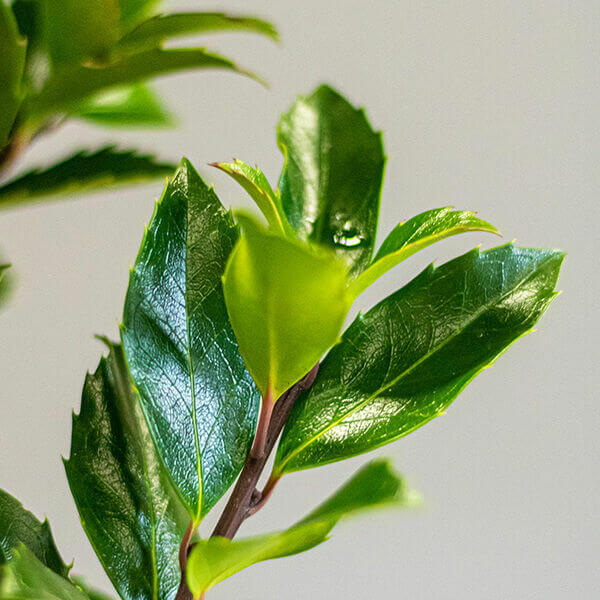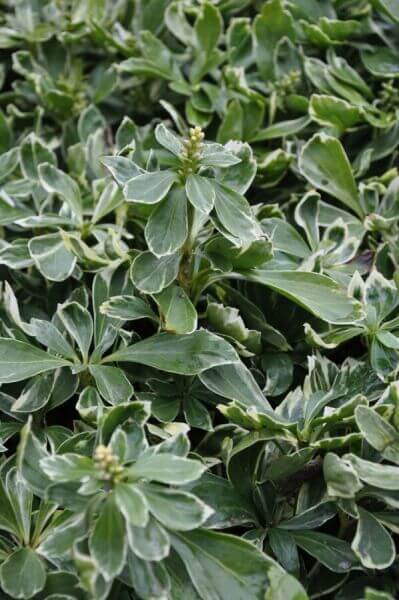Hedge Plants For Decorative Landscaping
Hedge Plants For Decorative Landscaping
Blog Article
Best Hedging Plants For Warm Climates
Boost your garden's attraction with rich hedge ranges such as Yew (Taxus), Thuja, Laurel, Photinia, and Bamboo, celebrated for their structural stability and environmental advantages.
Yew and Thuja provide evergreen coverage and winter strength, while Laurel uses fast growth and broad, fragrant leaves.
Photinia includes seasonal charm with its dynamic red foliage, and Bamboo provides a low-maintenance, serene ambiance.
These hedges improve air quality, lower noise, and produce tranquil, personal areas.
Proper planting, spacing, and maintenance guarantee energetic development and environmental consistency.
Check out how these lush varieties can elevate your garden's charm and well-being.
Key Takeaways
Transform Your Garden With Lush Hedge Ranges
- Select Yew for its thick, evergreen development and unrivaled durability.
- Opt for Laurel for its fast growth and broad leaves, guaranteeing fast personal privacy.
- Pick Photinia for its lively seasonal foliage, which turns a striking dark red.
- Utilize Bamboo for a low-maintenance, winter-hardy hedge with aesthetic appeal.
- Space plants 2-3 per meter and prune routinely for ideal development and health.
Popular Hedge Plants
When changing a garden with rich hedge ranges, it's necessary to think about popular hedge plants such as Yew, Thuja, Laurel, and Photinia due to their special attributes and advantages.
Yew (Taxus) is extremely respected for its durability and thick, green development, making it a prime choice for withstanding landscapes.
Thuja is noted for its evergreen foliage and robust winter resilience.
Photinia adds seasonal vibrancy with red leaves that darken over time, creating vibrant visual appeal.
Laurel uses quick development and aromatic, broad leaves, perfect for fast privacy.
Additionally, Bamboo is an excellent choice for atmosphere, using a low-maintenance, winter-hardy alternative that boosts the garden's visual with its stylish, swaying canes.
These selections deal with a range of horticultural needs and preferences.
Advantages of Garden Hedges
Garden hedges provide a wide range of benefits, making them an important addition to any landscape. These natural barriers are cost-efficient to execute and provide substantial wind defense, improving air circulation and adding to noise reduction. The thick foliage of hedges like Thuja and Beech guarantees privacy by blocking visibility, developing a remote and serene environment.
Hedges likewise play an important function in microclimate regulation, supplying a stable environment that cultivates plant growth and minimizes temperature variations. Their elaborate leaf structures filter toxins, improving air quality and adding to a healthier garden environment.
Moreover, hedges stand out in noise decrease, absorbing and deflecting acoustic waves to lower ambient sound levels. This dual performance of providing both acoustic and visual privacy improves the total tranquility and visual appeal of any garden.
Planting and Upkeep Tips
For a successful hedge, precise preparation of the planting location is crucial. Guarantee the soil has proper pH and drainage to support strong root advancement.
Space the plants appropriately for the selected species. Water the hedge often throughout its initial growth phase, changing as required with seasonal changes.
Execute a organized bug control and disease prevention technique, utilizing chemical or natural treatments when necessary. Routinely examine for aphids, termites, and fungal infections.
Apply mulch to maintain wetness and suppress weeds. Seasonal pruning promotes dense development and air blood circulation, necessary for plant health.
Following these standards will help you cultivate a vibrant, properly maintained hedge that boosts the appeal of your garden.
Spacing and Trimming Guidelines
Spacing and Trimming Guidelines
Proper spacing and trimming are essential for cultivating healthy, visually appealing hedges. Sufficient spacing guarantees each plant receives adequate nutrients, light, and airflow.
Follow these guidelines for optimal hedge maintenance:
- Spacing: Position hedge plants 2-3 plants per meter to encourage robust development.
- Pruning Strategies: Regular pruning is essential for preserving preferred hedge height and shape. Trim new growth in summertime and cut down older wood throughout winter.
- Seasonal Care: Adjust trimming schedules and methods according to seasonal requirements to ensure plant health.
- Hedge Height: Frequently display and cut to preserve the desired hedge height and achieve consistent looks.
Sticking to these steps will guarantee your hedge grows, improving both the appeal and functionality of your garden.
Choosing the Right Hedge
Choosing the Right Hedge
Selecting the proper hedge involves evaluating aspects such as mature height, foliage density, and environmental strength. Successful hedge plant selection needs comprehending each species' development qualities and site-specific adaptability.
For instance, Yew (Taxus) offers outstanding longevity and thick growth, while Thuja is noteworthy for its winter strength. Additionally, considering upkeep requirements is essential; fast-growing species like Laurel or Privet demand regular trimming, whereas low-maintenance options like Bamboo or Ivy might be preferable for those looking for minimal upkeep.
Ecological elements such as soil type, light accessibility, and moisture conditions should likewise direct the selection procedure. This careful technique ensures the selected hedges will grow, offering both functional and aesthetic advantages to the garden landscape.
Delivery and Planting Advice
To guarantee your hedge plants flourish, they ought to be provided by specialized couriers and planted immediately upon arrival.
Follow these important steps for effective planting:
- Soil Preparation: Enrich the soil with raw material to enhance drainage and nutrient content.
- Planting Depth: Develop a trench twice the width and equal to the depth of the root ball.
- Watering Methods: Water completely after planting, keeping the soil consistently damp however not saturated.
- Mulching: Apply a layer of mulch to maintain wetness and reduce weeds.
Consumer Assistance and Service
Offered the crucial role of timely assistance in horticultural pursuits, our customer support group is readily available 6 days a week through telephone, email, and social networks to provide expert guidance and swiftly attend to any concerns. Their devotion to quick action times guarantees consumer fulfillment by dealing with questions associated with plant health, ideal planting methods, and upkeep schedules.

Response Time
-------------------
Within 24 hours
Within 48 hours
This extensive support group, enhanced by an outstanding 9.3/ 10 client ranking, highlights our dedication to improving the gardening experience for every client.
Often Asked Concerns
For How Long Does It Take for Hedge Plants to Develop?
Hedge plants typically need one to three years to end up being completely established, with the exact period differing by species and growing conditions.
Reliable care during this critical duration is vital for robust growth. Consistent watering, alert weed control, and suitable fertilizer application are essential in promoting strong root development.
For instance, fast-growing types like Laurel may develop quicker, while slower-growing ranges such as Yew might take longer. Persistent upkeep speeds up the establishment process, leading to dense and healthy hedges.
What Are the Best Hedge Plants for Privacy?
The question of the best hedge plants for personal privacy includes evaluating evergreen and deciduous alternatives.
Evergreen hedges like Thuja, Laurel, and Cypress provide year-round coverage, making sure continuous privacy.
In contrast, deciduous hedges such as Beech provide seasonal personal privacy, shedding leaves in cooler months.
Key upkeep suggestions for privacy hedges include regular cutting, Additional info fertilizing in spring, and correct spacing-- normally 2 to 3 plants per meter.
Additionally, consistent watering and persistent weed elimination are vital for promoting healthy, thick development.
Can Hedge Plants Bring In Wildlife to My Garden?
Yes, hedge plants can bring in wildlife to your garden by supplying necessary advantages like shelter, food, and nesting websites, therefore boosting regional biodiversity. Yew, holly, and laurel are excellent for bring in birds, while ivy supports a range of bugs.
Nevertheless, it's essential to note that there are some drawbacks, such as increased upkeep to handle bugs and routine upkeep. Carefully picking and keeping hedge varieties can help stabilize these drawbacks and benefits, eventually promoting a sustainable and lively community in your garden.
Are There Any Blooming Hedge Plants Available?
Yes, there are flowering hedge plants offered that can enhance the appeal of your garden.
For instance, Elaeagnus, likewise referred to as Olive Willow, produces aromatic white flowers in the fall, adding a touch of sophistication.
Photinia, another popular choice, showcases lively red leaves that develop into an abundant green, producing a vibrant visual impact throughout the seasons.
To make sure these plants flourish, it's important to practice proper pruning strategies and seasonal upkeep, such as cutting brand-new growth in the summer season and cutting back in the winter season.
These procedures will help keep the health and aesthetic appeal of your flowering hedges.
How Do I Avoid Pests in My Hedge Plants?
To prevent bugs in hedge plants, use natural pest control techniques and keep proper hedge care. Introduce helpful bugs like ladybugs, which victimize harmful insects, to create a well balanced ecosystem.
Routinely inspect your hedges for indications of invasion and quickly get rid of any afflicted parts to prevent the spread. Make sure the health of your hedges by applying well balanced fertilizers and providing appropriate water.
Use mulching to maintain soil wetness and appropriate spacing to lower plant tension and promote robust development. These practices jointly assist in lessening bug concerns and maintaining a healthy hedge.
Conclusion
In essence, selecting the right hedge varieties such as Yew, Thuja, and Laurel can transform any garden into a relaxing sanctuary. These plants supply year-round plant, boost aesthetic appeal, and offer practical advantages like noise reduction and wind security.
Correct planting methods, precise spacing, constant watering, and seasonal trimming are crucial for optimal growth.
Reliable delivery services and professional consumer support ensure a seamless experience from purchase to planting, making it simpler than ever to raise your outdoor space.
Garden hedges offer a multitude of advantages, making them an important addition to any landscape. These natural barriers are economical to implement and supply considerable wind defense, improving air blood circulation and contributing to noise decrease. The dense foliage of hedges like Thuja and Beech makes sure privacy by blocking visibility, developing a peaceful and remote environment.

Pruning Strategies: Routine pruning is important for maintaining wanted hedge height and shape. Cut new development in summertime and cut back older wood during winter season.
Report this page